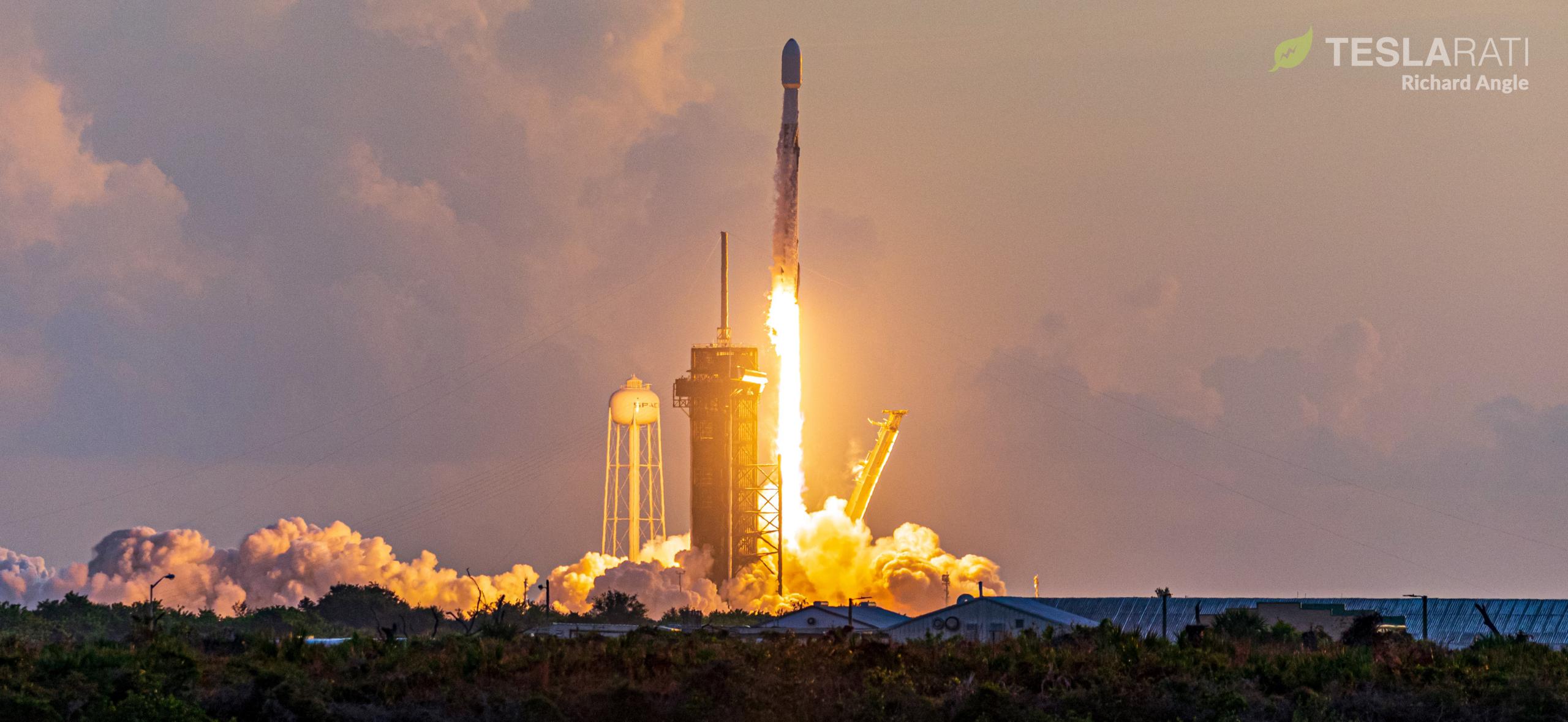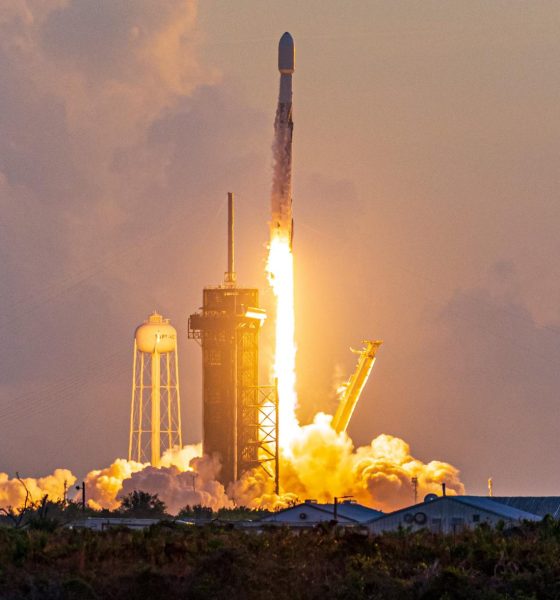

News
SpaceX aces Starlink launch, landing, and catch as Elon Musk teases public beta ETA
A SpaceX Falcon 9 rocket has successfully launched the 12th batch of ~60 operational Starlink satellites, bringing more than 19 days of delays and five separate launch attempts to a welcome close.
SpaceX’s Starlink-12 success comes in the midst of an unusual scourge of launch scrubs and aborts that began with United Launch Alliance’s (ULA) latest Delta IV Heavy launch and continued with both SpaceX’s Starlink-12 and GPS III SV04 missions. Largely coincidental, the only direct ties between the myriad ULA and SpaceX delays were the occasional bout of bad weather and the US Air Force-organized launch range’s prioritization of ULA’s multibillion-dollar spy satellite launch – forcing SpaceX to stand down during ULA launch attempts.
As of now, ULA’s NROL-44 Delta IV Heavy launch is entering the sixth week of delays since the mission’s first late-August launch attempt and has no firm date set for the next attempt At the same time, during SpaceX’s first GPS III SV04 launch attempt, Falcon 9 suffered a rare last-second launch abort due to a propulsion problem that will likely take a week or more to resolve.

Thankfully, SpaceX’s patience with Starlink-12 ultimately paid off, and the mission was a spectacular success, launching shortly after dawn and culminating with a flawless Falcon 9 booster landing, record-breaking fairing catch, and another batch of 60 satellites in orbit. The first US-built rocket to launch NASA astronauts in almost a decade and also the current world-record holder for fastest reuse of an orbital-class rocket, Falcon 9 booster B1058 completed its third launch and landing in support of Starlink-12.
The mission was also the first time SpaceX has reused a Falcon 9 payload fairing twice – flying the same fairing half for the third time, in other words. Incredibly, SpaceX recovery ship GO Ms. Tree (formerly Mr. Steven) actually managed to catch the thrice-flown fairing in its football field-sized net, potentially guaranteeing a fourth flight. The catch was SpaceX’s seventh overall (since June 2019) and its fourth fairing catch since July 2020, a strong sign that the company is honing in on consistent, repeatable catches.
Aside from rocket reusability, CEO Elon Musk also unexpectedly revealed that Starlink-12 pushed SpaceX past a major Starlink milestone, stating that “once these satellites reach their target position, [SpaceX] will be able to roll out a fairly wide public beta in [the] northern US & hopefully southern Canada.”
Prior to Musk’s October 6th tweet, President and COO Gwynne Shotwell had revealed in May 2020 that SpaceX would be ready to kick off the first public Starlink internet beta tests after Launch 14. Given that SpaceX has deorbited almost two-thirds of the first batch of 60 Starlink “v0.9” beta satellites, that 14-flight milestone is likely another two launches out.
Based on past launches and assuming that all 60 Starlink-12 spacecraft are healthy, the satellites should be able to power up ion thrusters and climb to operational orbits (i.e. “reach their target position[s]” within 4-5 weeks. With an unprecedented constellation of 700+ Starlink satellites in orbit, SpaceX’s first “fairly wide” public beta test could begin as early as November 2020.
Check out Teslarati’s Marketplace! We offer Tesla accessories, including for the Tesla Cybertruck and Tesla Model 3.

Elon Musk
Elon Musk and Tesla AI Director share insights after empty driver seat Robotaxi rides
The executives’ unoccupied tests hint at the rapid progress of Tesla’s unsupervised Robotaxi efforts.

Tesla CEO Elon Musk and AI Director Ashok Elluswamy celebrated Christmas Eve by sharing personal experiences with Robotaxi vehicles that had no safety monitor or occupant in the driver’s seat. Musk described the system’s “perfect driving” around Austin, while Elluswamy posted video from the back seat, calling it “an amazing experience.”
The executives’ unoccupied tests hint at the rapid progress of Tesla’s unsupervised Robotaxi efforts.
Elon and Ashok’s firsthand Robotaxi insights
Prior to Musk and the Tesla AI Director’s posts, sightings of unmanned Teslas navigating public roads were widely shared on social media. One such vehicle was spotted in Austin, Texas, which Elon Musk acknowleged by stating that “Testing is underway with no occupants in the car.”
Based on his Christmas Eve post, Musk seemed to have tested an unmanned Tesla himself. “A Tesla with no safety monitor in the car and me sitting in the passenger seat took me all around Austin on Sunday with perfect driving,” Musk wrote in his post.
Elluswamy responded with a 2-minute video showing himself in the rear of an unmanned Tesla. The video featured the vehicle’s empty front seats, as well as its smooth handling through real-world traffic. He captioned his video with the words, “It’s an amazing experience!”
Towards Unsupervised operations
During an xAI Hackathon earlier this month, Elon Musk mentioned that Tesla owed be removing Safety Monitors from its Robotaxis in Austin in just three weeks. “Unsupervised is pretty much solved at this point. So there will be Tesla Robotaxis operating in Austin with no one in them. Not even anyone in the passenger seat in about three weeks,” he said. Musk echoed similar estimates at the 2025 Annual Shareholder Meeting and the Q3 2025 earnings call.
Considering the insights that were posted Musk and Elluswamy, it does appear that Tesla is working hard towards operating its Robotaxis with no safety monitors. This is quite impressive considering that the service was launched just earlier this year.
Elon Musk
Starlink passes 9 million active customers just weeks after hitting 8 million
The milestone highlights the accelerating growth of Starlink, which has now been adding over 20,000 new users per day.

SpaceX’s Starlink satellite internet service has continued its rapid global expansion, surpassing 9 million active customers just weeks after crossing the 8 million mark.
The milestone highlights the accelerating growth of Starlink, which has now been adding over 20,000 new users per day.
9 million customers
In a post on X, SpaceX stated that Starlink now serves over 9 million active users across 155 countries, territories, and markets. The company reached 8 million customers in early November, meaning it added roughly 1 million subscribers in under seven weeks, or about 21,275 new users on average per day.
“Starlink is connecting more than 9M active customers with high-speed internet across 155 countries, territories, and many other markets,” Starlink wrote in a post on its official X account. SpaceX President Gwynne Shotwell also celebrated the milestone on X. “A huge thank you to all of our customers and congrats to the Starlink team for such an incredible product,” she wrote.
That growth rate reflects both rising demand for broadband in underserved regions and Starlink’s expanding satellite constellation, which now includes more than 9,000 low-Earth-orbit satellites designed to deliver high-speed, low-latency internet worldwide.
Starlink’s momentum
Starlink’s momentum has been building up. SpaceX reported 4.6 million Starlink customers in December 2024, followed by 7 million by August 2025, and 8 million customers in November. Independent data also suggests Starlink usage is rising sharply, with Cloudflare reporting that global web traffic from Starlink users more than doubled in 2025, as noted in an Insider report.
Starlink’s momentum is increasingly tied to SpaceX’s broader financial outlook. Elon Musk has said the satellite network is “by far” the company’s largest revenue driver, and reports suggest SpaceX may be positioning itself for an initial public offering as soon as next year, with valuations estimated as high as $1.5 trillion. Musk has also suggested in the past that Starlink could have its own IPO in the future.
News
NVIDIA Director of Robotics: Tesla FSD v14 is the first AI to pass the “Physical Turing Test”
After testing FSD v14, Fan stated that his experience with FSD felt magical at first, but it soon started to feel like a routine.

NVIDIA Director of Robotics Jim Fan has praised Tesla’s Full Self-Driving (Supervised) v14 as the first AI to pass what he described as a “Physical Turing Test.”
After testing FSD v14, Fan stated that his experience with FSD felt magical at first, but it soon started to feel like a routine. And just like smartphones today, removing it now would “actively hurt.”
Jim Fan’s hands-on FSD v14 impressions
Fan, a leading researcher in embodied AI who is currently solving Physical AI at NVIDIA and spearheading the company’s Project GR00T initiative, noted that he actually was late to the Tesla game. He was, however, one of the first to try out FSD v14.
“I was very late to own a Tesla but among the earliest to try out FSD v14. It’s perhaps the first time I experience an AI that passes the Physical Turing Test: after a long day at work, you press a button, lay back, and couldn’t tell if a neural net or a human drove you home,” Fan wrote in a post on X.
Fan added: “Despite knowing exactly how robot learning works, I still find it magical watching the steering wheel turn by itself. First it feels surreal, next it becomes routine. Then, like the smartphone, taking it away actively hurts. This is how humanity gets rewired and glued to god-like technologies.”
The Physical Turing Test
The original Turing Test was conceived by Alan Turing in 1950, and it was aimed at determining if a machine could exhibit behavior that is equivalent to or indistinguishable from a human. By focusing on text-based conversations, the original Turing Test set a high bar for natural language processing and machine learning.
This test has been passed by today’s large language models. However, the capability to converse in a humanlike manner is a completely different challenge from performing real-world problem-solving or physical interactions. Thus, Fan introduced the Physical Turing Test, which challenges AI systems to demonstrate intelligence through physical actions.
Based on Fan’s comments, Tesla has demonstrated these intelligent physical actions with FSD v14. Elon Musk agreed with the NVIDIA executive, stating in a post on X that with FSD v14, “you can sense the sentience maturing.” Musk also praised Tesla AI, calling it the best “real-world AI” today.








